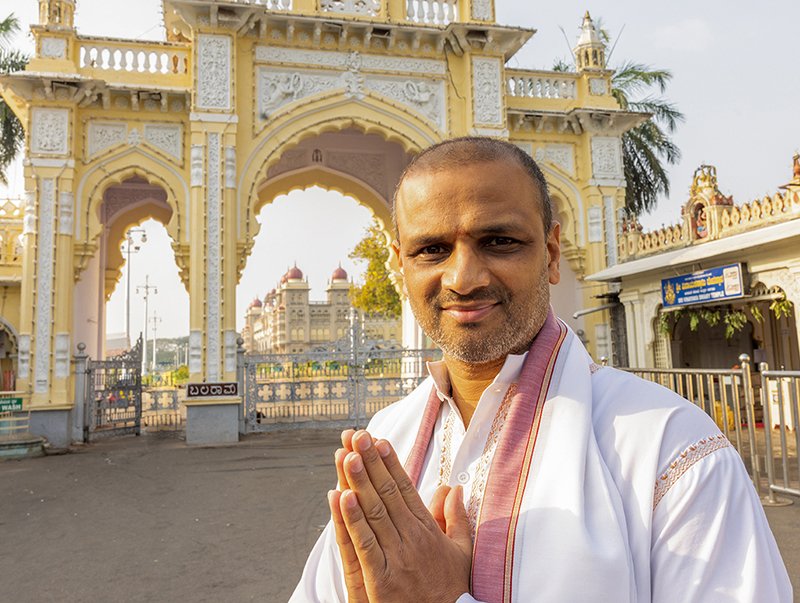I’m the first to admit it: I love shopping and I tend to live for the moment. I took a quiz recently that tested my financial know-how, and for the question, “What would be considered a long-term financial goal?,” I chose three to six months; the right answer is more than five years. Most of my spending isn’t exorbitant—thrift store finds, the occasional Zappos splurge, too much eating out—but, over time, it started weighing on my wallet as well as my mind.
The first time my domestic partner suggested putting together a budget, I fought back tooth and nail. To me, spending by the numbers felt stale, controlling, the diametric opposite of spontaneity and freedom. My worldview basically boils down to “Life is a vacation”—and everyone knows that you don’t watch your spending when you’re on vacation.
Our attitudes and actions around money can be significant indicators of the emotional and spiritual issues we’re grappling with—even, or perhaps particularly, those we haven’t fully acknowledged yet. It’s like a shark fin: If there’s a herd of credit cards cresting the waves, you can be pretty sure there’s something dangerous under the water.
Related: A Meditation for Making Positive Live Changes
The Kundalini Yoga teacher and entrepreneur Guru Jagat, who has three yoga centers, a record label, a forthcoming book with Harper Collins, and a vision to found spiritual centers around the world, says that money (like sex) is “final frontier stuff”—it can be a catalyst for deep investigation of the self. “Business has been such a powerful place for me to work with my spiritual maturity, to realize illusion and exercise bravery,” she says. She teaches that there are ultimately two channels we can choose between: prosperity or poverty.
“We bring our histories with us when we deal with money,” says Judith Gruber, a licensed clinical social worker, psychotherapist, and life, business, and career coach, who specializes in helping people develop a healthy and balanced approach to money. “It reveals how we feel about ourselves, what we believe, and how we value ourselves.” For example, if you have a hard time buying things for yourself, you might be neglecting your self-care in other ways as well.
If you’re ready to shed light on your financial life—and you’re looking for something more than recommendations for user-friendly budget software—here are five ways to begin forging a more conscious relationship with money and with yourself.
1. Identify what kind of spender you are, and how you got that way.
Before you can change your behavior around money, you need to examine the feelings and beliefs that underlie that behavior. Gruber suggests writing a “money autobiography” that traces what you were taught about money as a child and the emotions that come up for you around wanting, getting, and spending. Her concept of the “MoneyMask™” theorizes that the way we spend reflects the emotional wounds we received early in life. We might overspend to impress others and feel powerful, or we might hang on tight to what we’ve got because we’ve never felt fully satiated and cared for. Money coach and psychotherapist Olivia Mellan, author with Sherry Christie of Money Harmony: A Road Map for Individuals and Couples, has identified six major money personality types: the Hoarder, the Spender, the Money Monk, the Avoider, the Amasser, and the Money Worrier. (Take the quiz to discover your financial personality.)
2. Be aware of when and why you’re spending money for purely emotional reasons.
Retail therapy isn’t necessarily a bad thing, but it’s important to recognize and acknowledge it, says Guru Jagat. “You always have to ask yourself, what are you trying to fill up?” she says. “How quickly do you feel empty again after consuming? There’s no shame in it—just be aware of it. I’m always very aware of when I’m doing retail therapy because I need to blow off some steam, and I give myself a budget.” (She also makes a point of doing her retail therapy locally to support fellow entrepreneurs.) To help identify patterns and habits, Gruber suggests keeping a financial journal to track your day-to-day actions and reactions around money. Don’t judge yourself, she stresses—simply observe.
3. Use a budget as a tool to cultivate balance, gratitude, and healthy boundaries.
Crafting a budget can be “expansive rather than constrictive,” Gruber says. See the glass as half full—instead of focusing on what you can’t afford, look at everything your money is doing for you. Just as kids are said to crave boundaries, Spender types like me function better with clear delineations around what’s acceptable. As my partner kept pushing for a budget, and as college tuition for our daughter loomed closer, I eventually caved. At first, when we sat down at our respective devices to measure our income and outflow each month and categorize where it was all going, it felt like a tiny torture. But, gradually, I began to take some satisfaction in seeing how closely we could make the reality match the pie-chart wedges on the screen. And—coincidental or no?—we collectively began earning more and spending less.
4. Know that you can pursue the spiritual without renouncing the material.
The stereotype of the ascetic with a beggar’s bowl is not applicable or desirable for most contemporary Americans, says Guru Jagat. “We’re still working with these polarities—people think they have to be poor and give away all their possessions to be spiritual,” she said. Her teacher, Yogi Bhajan, who is credited with bringing Kundalini Yoga to the West, taught that financial health reflects the state of one’s relationship with the external world; the definition of true prosperity, he said, was the ability to support 25 families. “He was very clear that we are not sadhus,” Guru Jagat said. “Kundalini is a householder’s science. He came to America with 35 cents in his pocket and he was a multimillionaire when he died.” (Yogi tea and Peace cereals are among the products produced by the 17 businesses he helped create.) On a psychological level, Gruber posits that people who wear the “Spiritual MoneyMask™” are using a disdain for wealth as a cover for their unwillingness to face deeper issues around money.
5. Fill the hole with something else.
Whether we’re hoarding it or spending it, an unbalanced relationship with money is typically a way to fill what Guru Jagat refers to as the “gaping maw” inside us. Experiment with other approaches to finding meaning and pleasure in life: meditation, yoga, service, creativity, time in nature. Guru Jagat’s Kundalini-based “yogic prosperity technology” focuses on training the mind and the nervous system “to look for grounded experiences throughout the day, so the comings and goings and ups and downs don’t shake you as much.” She says, “More and more people are realizing that no amount of money or success will make life better unless you have your mind dialed into experiencing it in a proper way. If you compass your life to serve something bigger than your own personal neuroses and limitations, to be of service or to create or whatever [is right for you], that in itself is the greatest step toward prosperity.”








Comments (0)